Sometimes, electricity feels like magic. You turn on a light switch and – poof – the light turns on. But it isn’t magic, and wasting electricity is in no way magical. That’s why I’ve pulled together a few energy-saving tips to help you save electricity in your home.
These tips range from free, to low cost, to a few that would require some investment up front, but are certain to pay out over the long haul.
Easy Ways that You Can Save on Electricity Bills
It doesn’t take a lot to make a big difference in how much electricity you consume on a monthly basis, and therefore how much you have to pay to the Electric Company every month. Small changes and daily power-saving tips can add up to big savings, and a big contribution to the Eco-Friendliness of your home.
Electricity Saving Tip #1 – Let There Be (Less) Light
A single 100-watt incandescent bulb running for an hour per day can cost up to $3.75 a year. Multiply that by how many light bulbs there are in your house and how many hours there are in a day, and the cost for leaving a light bulb burning in an unused room quickly adds up.
By turning off lights when they are not needed, the savings adds up quickly.
In our house, one of the biggest problems we had was people turning the lights off as they left frequently empty rooms such as the bathrooms and the laundry room. To solve this issue we installed motion sensor light switches that automatically sense when someone is in the room and automatically turn off after the person has left the room.
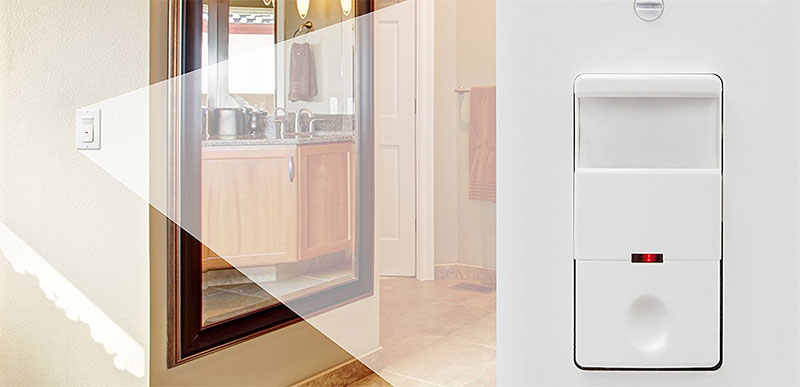
Now, I no longer discover that the upstairs bathroom light has been left on all day when nobody is using it. These switches can often be adjusted with time delay off settings for 15 seconds to 30 minutes of “no movement”, so someone sitting in the tub doesn’t suddenly end up in the dark.
Even when the lights are needed, switching to energy efficient light bulbs can save a LOT of electricity.
This handy chart compares the difference between Incandescent, Compact Fluorescent (or CFL) and LED lights based on a standard 60-watt bulb burning for 25,000 hours at an average cost of electricity at
$0.15 per kWh.
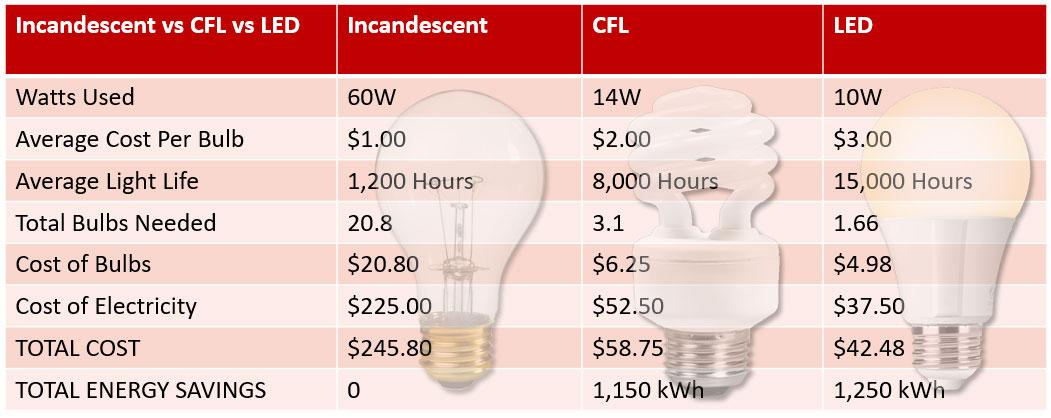
As LED bulbs become more and more popular, the price on them continues to come down.
For example, you can buy a 6 Pack of 60W Equivalent LED bulbs from Amazon for only on sale for less than $12.00.
Electricity Saving Tip #2 – Go Unplugged
Even when they are not in use, electronics can draw quite a bit of power in “Standby” mode. In fact, up to 10% of an average home’s annual electricity usage is from electronics that are not actually being used.
That old printer that you haven’t actually turned on in 6 months? You’d be surprised how much electricity it is drawing to just sit there and collect dust.
If you don’t use it at least daily, unplug it and save some money.
As an alternative to constantly unplugging and plugging in your electronics, you can put them on a power bar with an on/off switch or – for those you use on a semi-regular basis – set them on a timer.

If you have a space heater in your bedroom to help you feel all cozy when you crawl into bed, put it on a timer to turn on just before bedtime and turn off about 3 hours after you’ve normally fallen asleep.
You tend to sleep better in cooler temperatures, AND you’ll save hours of electricity.
You can always time it to turn back on an hour before you wake up so that it’s warm when you’re getting out of bed.
Electric Timers can be Used Indoors and Outdoors
This can apply outdoors as well. Outdoor timers can be used to turn on and off landscape lighting, Christmas lights, even pool pumps.
|
Quick Tip:
|
By keeping things unplugged, or turned off by timer (which cuts the power from the source) you can save a lot of energy while still enjoying all the creature comforts of home.
And, don’t worry, those little mechanical timers use next to no electricity to keep turning things on and off.
Electricity Saving Tip #3 – Schedule for Off-Peak Hours
Whether your local utility companies charges based on on-peak vs off-peak hours or not, the demand on the electrical grid during peak times can increase both the overall cost and the overall impact on the environment.
Unless you absolutely must, try to avoid doing laundry during the day and focus – instead – on doing electricity heavy chores on evenings, weekends, and holidays when the business demand is at its lowest.
If your electric company uses “Time of Use” billing to charge different amounts during On-peak, Off-Peak, and Mid-peak hours, their schedule probably looks something like this.

The reason many companies charge based on time of use, setting a higher cost per kWh during peak hours, is that – with all of the additional demand from businesses – that is the most expensive time to produce electricity.
By reducing the peaks, we can reduce the maximum capacity that plants must be able to product, which can reduce total costs as well as total negative impact on the environment.
Electricity Saving Tip #4 – Cut A/C Costs
Running your Air Conditioner inefficiently can increase your electric bill by up to 50%. But a few simple steps can help you stay cooler without dealing with the stress of an enormous bill at the end of the summer.
Similar to the Heat Savings Tips, good thermostat practices can save a lot of energy and expense.
According to The Spruce, 78 degrees Fahrenheit is the most efficient setting for your air conditioner during warmer months. Cooling your home to a lower temperature, such as 72 degrees, could increase your cooling costs by as much as 47 percent.
The trick is to balance savings against comfort, and understand that people get used to certain setting — and can get used to new ones.
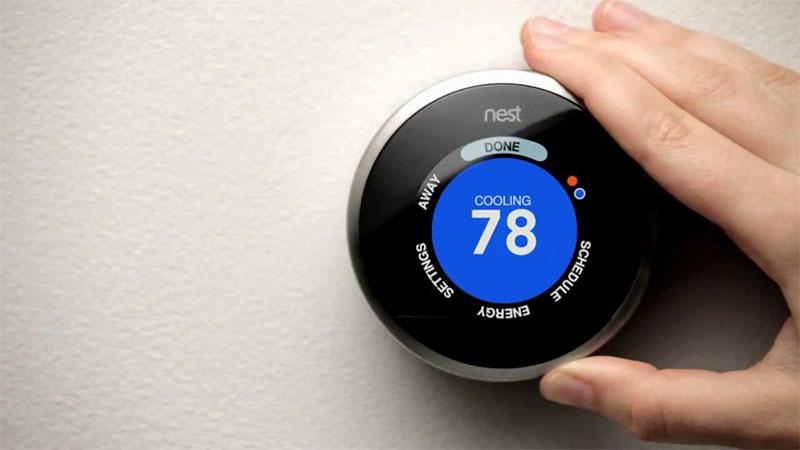
|
Quick Tip:
|
By balancing your “low” temperature setting, your “high” temperature setting, and programming them throughout the day, you can save a lot of electricity and money while remaining calm, cool, and collected.
Turning the A/C temperature down REALLY low does not cool the house off any faster… it just means the A/C will keep running even after it’s reached the desired temperature, wasting a LOT of energy.
As with Heat Savings Tips, making sure your home is well insulated and as many drafts are plugged as possible will also help keep the cool air inside and the hot air outside.
Finally, using fans – including ceiling fans, rotating fans, and even the one built into your furnace – to help circulate the air can help cool your home at far less than the cost of running the Air Conditioner.
Electricity Saving Tip #5 – Use the Right Appliance & Use the Appliance Right
I’ve seen people turn on the oven to 450 degrees just to heat up a slice of leftover pizza. I’ve also seen people run the washing machine to clean one outfit.
By using the right appliances in the right way, you can significantly reduce your consumption of electricity.
The first step, of course, is to purchase energy-efficient appliances. You may think you’re saving money by using that hand-me-down refrigerator from your Great Grandmother, but you’re really not.
Today’s appliances use far more electricity than their forefathers.
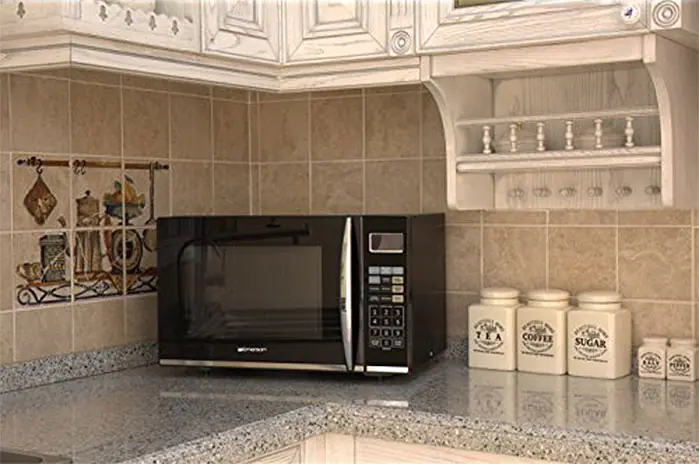
The next step is to pick the right appliance for the job. On average, Microwaves use 50% less electricity than conventional ovens. Although they aren’t right for every job, today’s microwaves can cook (and reheat) a wide variety of foods and beverages quickly and efficiently.
|
Quick Tip:
|
Your humble toaster oven can do a great job of reheating pizza, Chinese food, or making a delicious tuna melt… all the while using far less electricity than your oven.
And letting your dishes air dry rather than using the heat setting can save $$$ every single year.
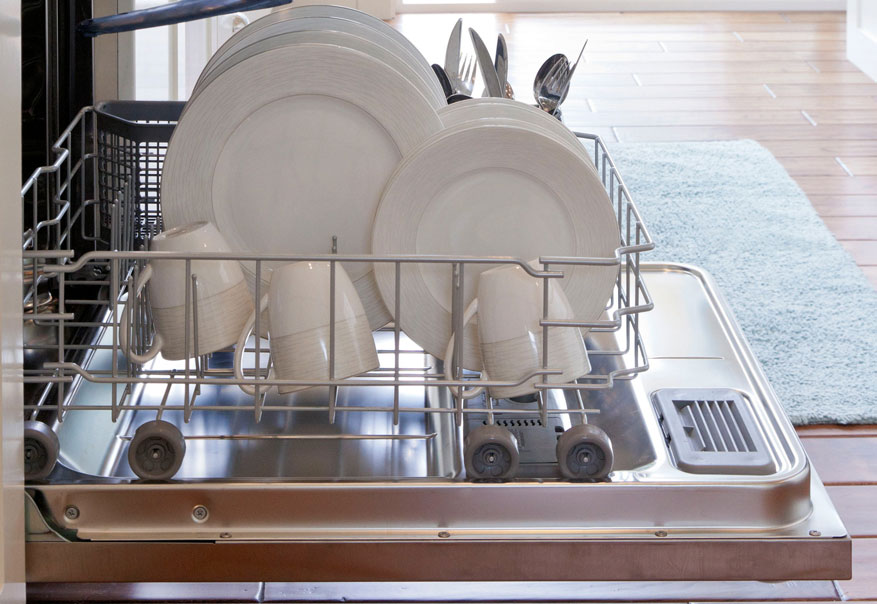
If your dishwasher has an air-dry cycle, use instead of the heat dry cycle. If you don’t have this option, simply open the door a crack when the load has finished the washing cycle and let the dishes dry.
Laundry is another big opportunity to save both electricity and water.
Wait until you have a full load before running the washing machine. Using up both the washer and dryer to clean one pair of jeans and a few socks wastes both electricity and water.
In fact, as much as your mother may have taught you NOT to do this… try to save up your laundry. Drying two (or more) loads in a row helps make the most of the heat that has already been generated by your dryer.
The washing machine usually takes less time than the dryer, so you should be ready to swap a new load into the dryer as soon as the old load is properly dried.
And clean the dryer filter. The more that is caught in that filter, the harder your dryer has to work to remove the moisture from your clothes.
|
Quick Tip:
|
With proper and efficient use of major and small appliances, you can balance your electricity use while still getting everything done the way you like it.
Small Changes, Big Impact
It doesn’t take a lot to make a big difference in your electricity savings during the year. These Easy & Eco Friendly energy saving tips can help you make an impact on your home, your wallet, and the world around you.






